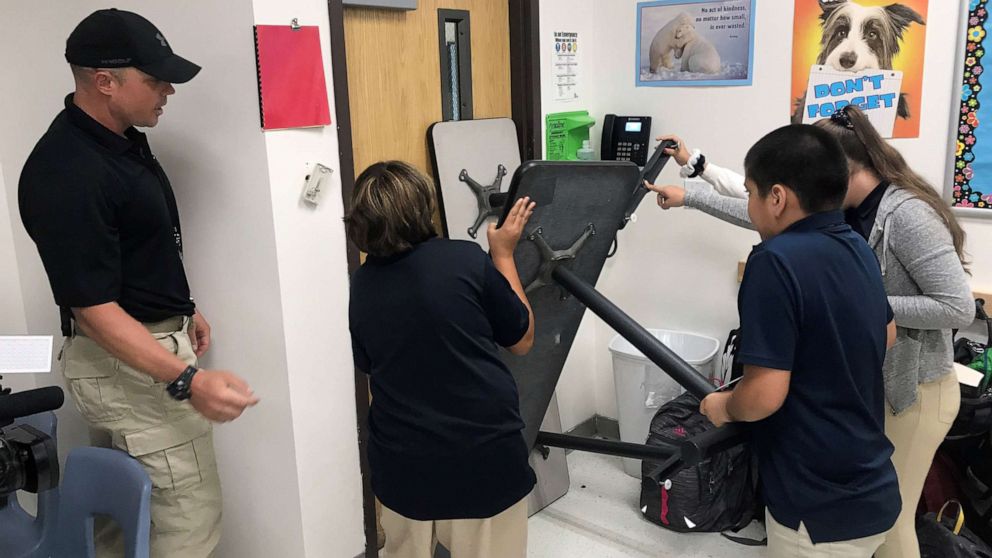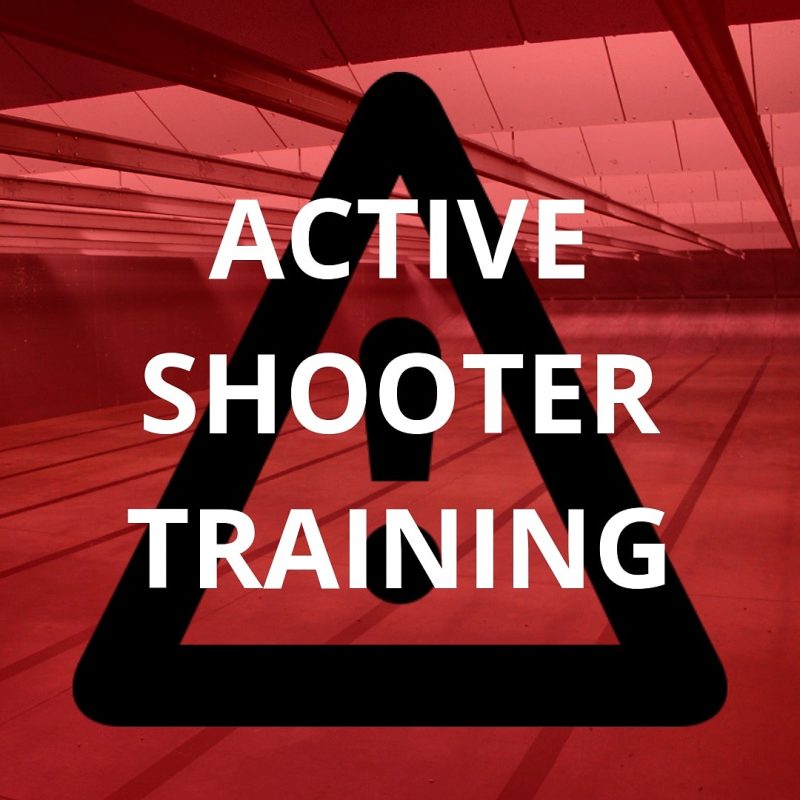Comprehensive Active Shooter Training Programs for Schools and Workplaces
Comprehensive Active Shooter Training Programs for Schools and Workplaces
Blog Article
Carrying Out Energetic Shooter Training: Ideal Practices for Creating a Safe and Prepared Neighborhood Setting
As neighborhoods face the disturbing reality of energetic shooter incidents, the application of thorough training programs becomes critical. An effective technique rests on not only the development of tailored educational programs that attend to neighborhood dangers yet likewise the participation of varied stakeholders. By employing a selection of training techniques, areas can guarantee that all participants are outfitted with essential skills. The obstacle lies in preserving a flexible structure that advances with arising threats. What are the essential aspects that can change a standard training program right into a durable model for neighborhood durability?

Understanding the Demand for Educating
In an age noted by boosting cases of violence in public areas, understanding the need for active shooter training has never ever been much more important. Extensive training initiatives can equip individuals with the expertise and skills to react decisively.
Training promotes a feeling of empowerment and preparedness, enabling people to really feel even more safe and secure in their surroundings. The benefits of energetic shooter training prolong past immediate response; they include enhancing interaction methods and boosting general safety procedures within companies.
Key Components of Effective Programs
Reliable energetic shooter training programs incorporate a number of key parts that boost preparedness and reaction capabilities. First, extensive educational program advancement is vital, ensuring that training material matters, evidence-based, and customized to the details demands of the organization or neighborhood. This includes understanding the dynamics of active shooter incidents and the psychological effect on individuals included.
Second, realistic training circumstances ought to be utilized to imitate prospective circumstances, permitting individuals to exercise decision-making and feedback methods in a regulated environment. These drills assist in muscular tissue memory and construct confidence among individuals.
Third, an emphasis on communication protocols is vital. Establishing clear lines of interaction amongst police, emergency situation responders, and individuals guarantees worked with actions throughout an event. Normal updates and correspondence course aid maintain communication pathways clear and efficient.
Fourth, continuous evaluation and feedback mechanisms must be integrated right into the training program - active shooter training. Evaluating the efficiency of training via participant comments and performance metrics enables continuous renovation
Finally, fostering a society of safety and security and preparedness within the neighborhood urges alertness and positive measures, making sure that individuals are not just skilled yet additionally engaged in keeping a safe and secure setting.
Engaging Neighborhood Stakeholders

To effectively involve these stakeholders, it is vital to interact the purposes and benefits of the training. Holding educational sessions can help clear up the training's purpose, address problems, and detail the duties each stakeholder may play. Producing a stakeholder advising committee can facilitate recurring discussion, permitting for diverse perspectives and understandings to be incorporated right into the training program.
Building connections with neighborhood leaders and companies is likewise crucial. Their assistance can enhance outreach initiatives, rise participation, and ensure that training is tailored to the unique requirements of the neighborhood. Additionally, stakeholders can assist in sharing information and sources, reinforcing the message of safety and preparedness.
Ultimately, engaging neighborhood stakeholders not just enhances the training effort but additionally grows a feeling of possession amongst citizens, resulting in a check much more durable and educated neighborhood efficient in reacting successfully to possible threats.
Training Distribution Techniques
Making use of a range of training shipment methods is necessary to accommodate the diverse knowing styles and demands of individuals in active shooter training programs (active shooter training). Effective training can take numerous types, including lectures, hands-on simulations, on-line modules, and interactive workshops. Each method offers a distinct purpose and can boost the general knowing experience

On the internet modules supply versatility and accessibility, allowing individuals to learn at their very own pace. These can consist of video clips, tests, and discussions to evaluate understanding. Interactive workshops urge seminar and problem-solving, promoting team effort and interaction abilities.
Integrating a mixed approach that integrates these approaches not only enriches the training experience however additionally makes sure that participants are better prepared to react efficiently in the event of an energetic shooter scenario (active shooter training). By dealing with different learning preferences, organizations can produce a much more enlightened and receptive community
Constant Analysis and Renovation
Normal analysis and improvement of energetic shooter training programs are critical to keeping their relevance and effectiveness. As risks progress, so need to the methods and techniques employed in training. Continuous evaluation ensures that training content shows the most up to date knowledge on active shooter incidents, incorporating lessons gained from recent occasions and changing for emerging fads.
To promote this procedure, organizations ought to develop feedback mechanisms that include individual examinations, specialist testimonials, and occurrence debriefs. Gathering data on participant efficiency during drills and exercises is vital, as it highlights locations needing renovation and informs future training sessions. In addition, involving with legislation enforcement and emergency situation responders can offer useful insights into the functionality and applicability of training protocols.
Frequently scheduled testimonials of training products and techniques must be mandated, fostering an environment of technology and versatility. Organizations must likewise encourage a society of continuous discovering, where staff participants feel equipped to suggest modifications based on their experiences. By devoting to continuous examination and improvement, companies not just enhance the performance of their active Learn More shooter training programs yet also strengthen their total commitment to safety and readiness within the area.
Final Thought
In verdict, effective application of energetic shooter training necessitates a detailed strategy that prioritizes community interaction and realistic simulations. By creating tailored curricula, integrating varied training methods, and fostering partnership among stakeholders, neighborhoods can boost readiness. Continuous evaluation and comments systems are necessary for adapting programs to emerging dangers, therefore reinforcing overall security. Eventually, a commitment to recurring training and renovation cultivates a culture of alertness and readiness, making certain a more secure setting for all community participants.
Report this page